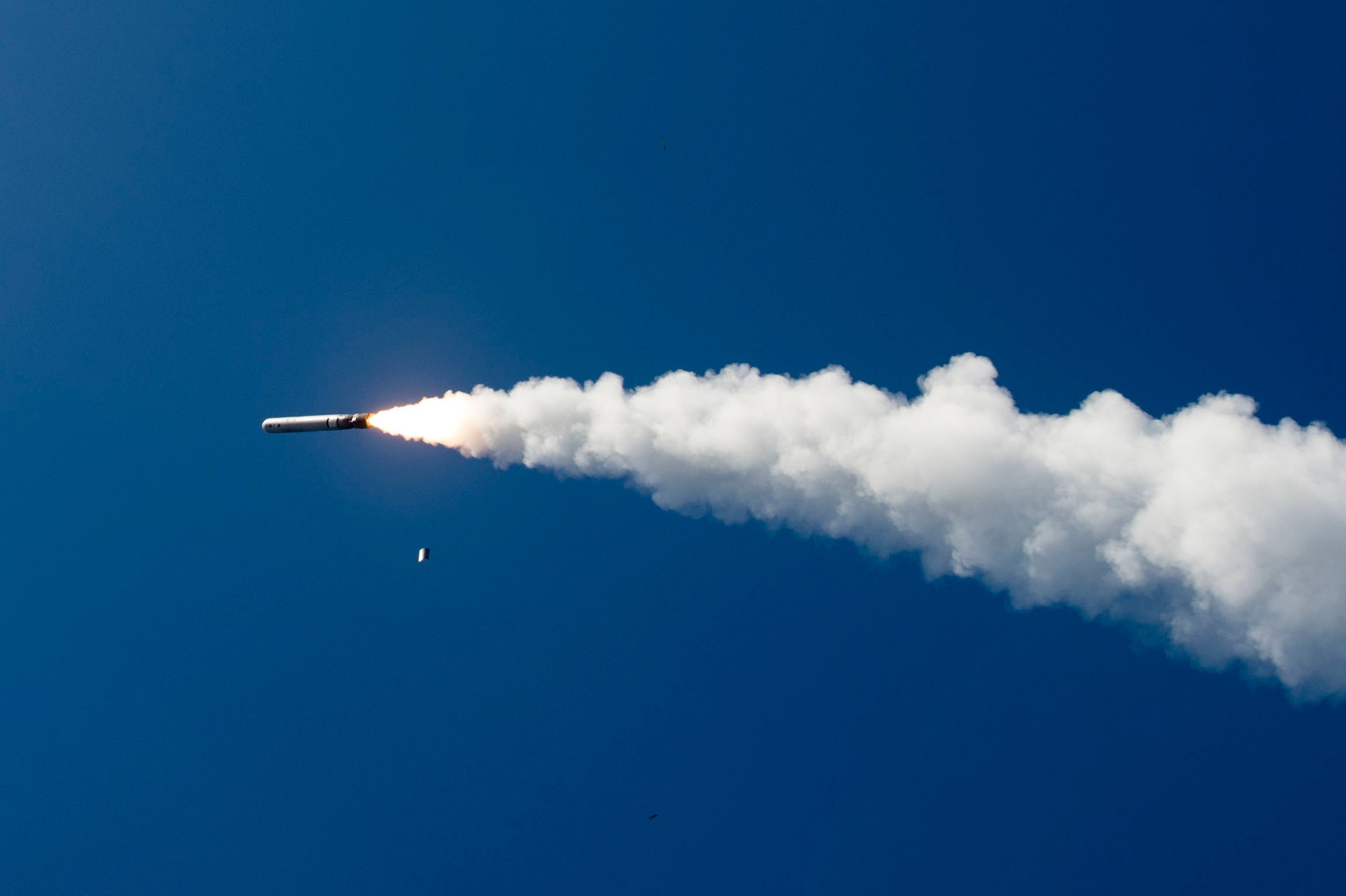
THE PENTAGON — The Defense Department officially abandoned the effort to pursue a nuclear sea-launched cruise missile, according to the Nuclear Posture Review unveiled today.
The SLCM-N initiative, which received support from the Joint Chiefs and U.S. Strategic Command, was found to be of “zero value” in the most recent U.S. nuclear weapons review, a senior defense official told reporters in a Thursday briefing.
“Everyone’s voice has been heard. As it applies to the current situation – Russia [and] Ukraine – [it] has zero value because even at the full funding value it would not arrive until 2035,” the senior defense official said. “Our deterrence posture is firm. Russia’s been deterred from attacking NATO. We continue to focus on Russia and China. I think as it stands right now, there is no need to develop SLCM.”
While the Fiscal Year 2023 budget proposal canceled the SLCM(N) program, the unclassified version of the Nuclear Posture Review released Thursday explained detailed the Biden administration’s rationale for abandoning the program. The idea of a sea-launched nuclear cruise missile was introduced in the 2018 NPR to provide a low-yield warhead option as a response to the use of an adversary’s tactical nuclear weapon. In addition, the U.S. developed the low-yield W76-2 warhead for its ballistic nuclear missile submarine fleet.
“The 2018 NPR introduced SLCM-N and the W76-2 to supplement the existing nuclear program of record in order to strengthen deterrence of limited nuclear use in a regional conflict,” reads the report. “We reassessed the rationale for these capabilities and concluded that the W76-2 currently provides an important means to deter limited nuclear use.”
The first reported use of the W76-2 was aboard USS Tennessee (SSBN-734) on a deterrent patrol beginning in 2019.
Republican lawmakers questioned the Pentagon’s plans to cancel the SLCM-N program following a USNI News report last year on a Navy budget document that called for eliminating the program.
“Our inventory of nuclear weapons is significant. We determined as we looked at our inventory that we don’t need that capability,” Defense Secretary Lloyd Austin told reporters on Thursday.
The Defense Department released the NPR on Thursday along with the 2022 National Defense Strategy that is the Pentagon’s contribution to the National Security Strategy and an update to the 2018 NDS.
In the series of strategy documents released Thursday, the Pentagon emphasized its focus on the People’s Republic of China as the so-called “pacing threat.”
The 2022 NDS, which builds upon the 2018 NDS released under the Trump administration, cites China’s increased aggression in the Indo-Pacific region and its military modernization efforts.
“The PRC’s increasingly provocative rhetoric and coercive activity towards Taiwan are destabilizing, risk miscalculation, and threaten the peace and stability of the Taiwan Strait. This is part of a broader pattern of destabilizing and coercive PRC behavior that stretches across the East China Sea, the South China Sea, and along the Line of Actual Control,” reads the NDS. “The PRC has expanded and modernized nearly every aspect of the PLA, with a focus on offsetting U.S. military advantages.”
In addition to the NDS and the Nuclear Posture Review, the Defense Department also released a Missile Defense Review that identifies both China’s and Russia’s missile modernization, including hypersonic weapons, as a persistent challenge to U.S. forces.
The report specifically cited the defense of Guam as a concern.
“The architecture for defense of the territory against missile attacks will therefore be commensurate with its unique status as both an unequivocal part of the United States as well as a vital regional location. Guam’s defense, which will include various active and passive missile defense capabilities, will contribute to the overall integrity of integrated deterrence and bolster U.S. operational strategy in the Indo-Pacific region,” reads the report.
In addition to precision-guided weapons, the Russian use of unguided weapons in Ukraine added concern to missile defense beyond Europe.
“Russia has been indiscriminately using thousands of offensive missiles in Ukraine, and mainly not for precision military effects but instead as broad area terror weapons to inflict terrible hardships on innocent civilians. Their use of missiles in Ukraine shows we should expect these weapons to become a common feature of 21st-century conflict,” the defense official said.





